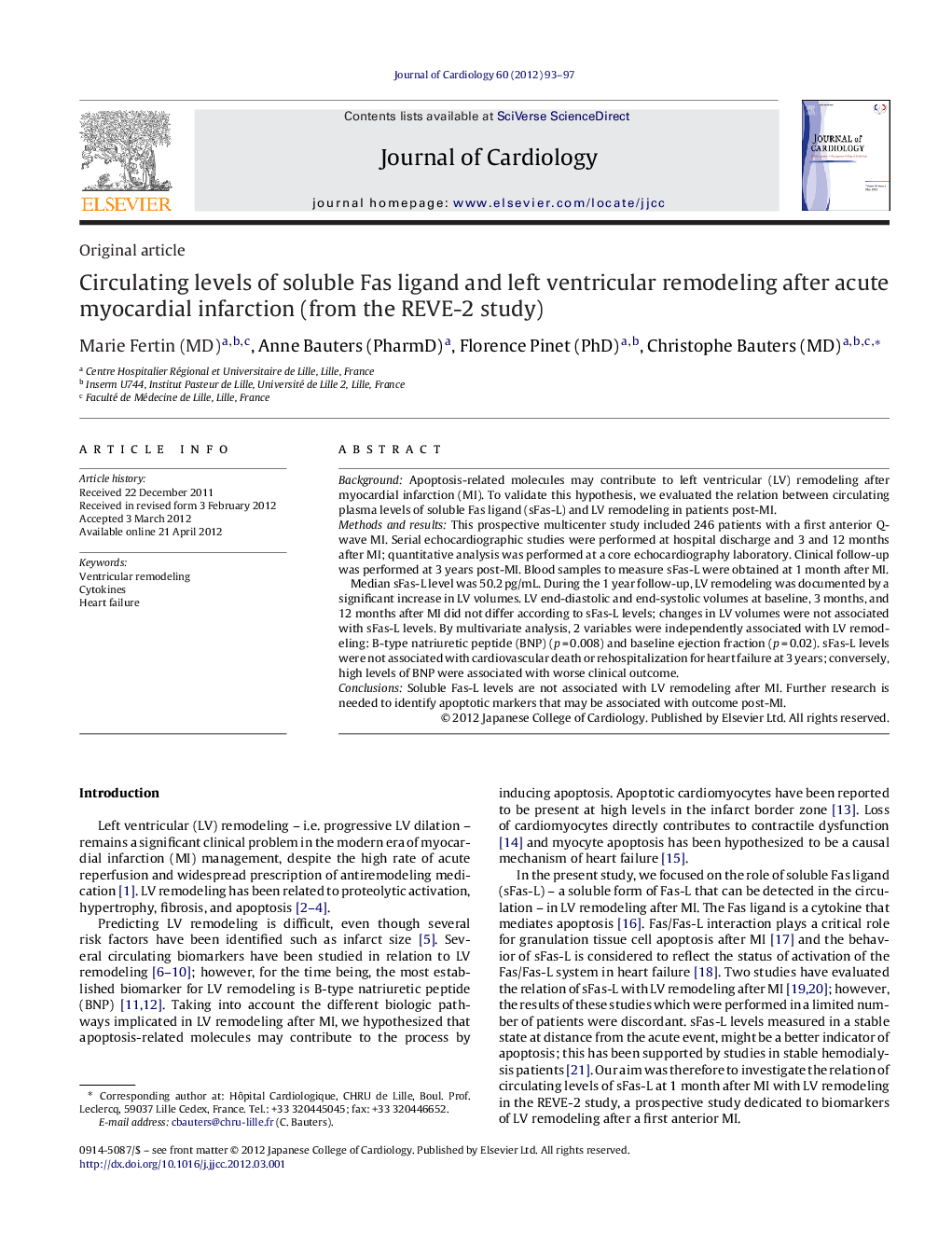| Article ID | Journal | Published Year | Pages | File Type |
|---|---|---|---|---|
| 2963295 | Journal of Cardiology | 2012 | 5 Pages |
SummaryBackgroundApoptosis-related molecules may contribute to left ventricular (LV) remodeling after myocardial infarction (MI). To validate this hypothesis, we evaluated the relation between circulating plasma levels of soluble Fas ligand (sFas-L) and LV remodeling in patients post-MI.Methods and resultsThis prospective multicenter study included 246 patients with a first anterior Q-wave MI. Serial echocardiographic studies were performed at hospital discharge and 3 and 12 months after MI; quantitative analysis was performed at a core echocardiography laboratory. Clinical follow-up was performed at 3 years post-MI. Blood samples to measure sFas-L were obtained at 1 month after MI.Median sFas-L level was 50.2 pg/mL. During the 1 year follow-up, LV remodeling was documented by a significant increase in LV volumes. LV end-diastolic and end-systolic volumes at baseline, 3 months, and 12 months after MI did not differ according to sFas-L levels; changes in LV volumes were not associated with sFas-L levels. By multivariate analysis, 2 variables were independently associated with LV remodeling: B-type natriuretic peptide (BNP) (p = 0.008) and baseline ejection fraction (p = 0.02). sFas-L levels were not associated with cardiovascular death or rehospitalization for heart failure at 3 years; conversely, high levels of BNP were associated with worse clinical outcome.ConclusionsSoluble Fas-L levels are not associated with LV remodeling after MI. Further research is needed to identify apoptotic markers that may be associated with outcome post-MI.
